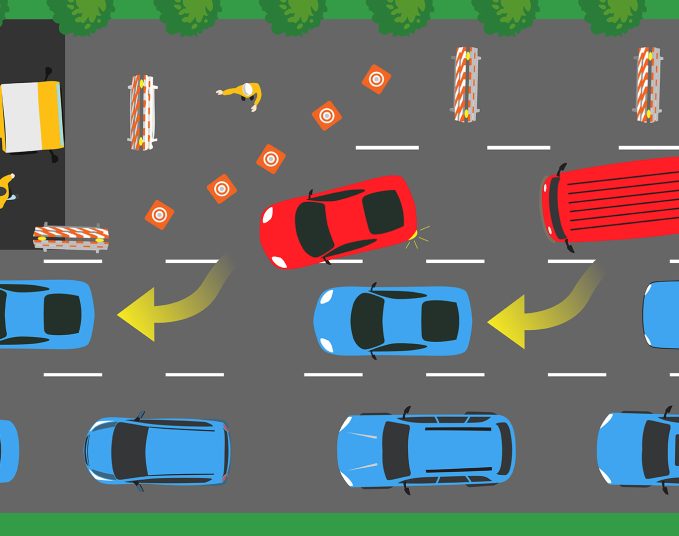The distance between the Oilers and the Miami area’s Florida Panthers is the longest of any Stanley Cup final match-up in history, with a span of 4,134 kilometres between the two arenas. That means if the series goes to seven — which, as of Friday seems very unlikely — the Oilers will have travelled a remarkable 25,804 kilometres — more than half the circumference of the globe. So far, the Stanley Cup finalists have travelled a whopping 8,268 kilometres to and from Florida.
But the real kicker? The time. The flight between Edmonton and Miami is just over seven-and-a-half-hours, meaning if McDavid and the boys play the full series, they’ll have spent an excruciating 45 hours in-flight over just 16 days. And if you’ve ever been on a long-haul flight, you’ll know that’s less akin to travel and more to a waking nightmare — mostly because with the cramped seating and lullabies performed by cranky babies, you definitely aren’t sleeping.
OK, maybe that’s not the case for the Oilers. They’re likely spending those seven-and-a-half-hour trips reclining in leather seats or being lulled to sleep with the finest in-flight entertainment. Still, it’s a long time on a plane. And all that travel’s got me thinking: What’s this mean for the team’s carbon footprint? Or better yet, the league’s?
Still Not Swifties
The good news is that even with these abnormally long flights, the Oilers aren’t even approaching Taylor Swift levels of emissions. The 1989 singer and known Kansas Chiefs’ superfan emits an ocean-boiling 8,300 tonnes of CO2 annually, according to Carbon Market Watch. By comparison, the Oilers’ private Air Canada A320 has sputtered out 197.49 tonnes of CO2 in the finals to date. If you factor in the Panthers travel as well, that number grows and will be just shy of 400 tonnes by the time the team returns to Florida. In the event of a game seven, the two teams will have added some 921.62 tonnes of carbon dioxide to the atmosphere.
Even if we’re not edging out the reigning queen of pop, that still seems like a lot of emissions. Especially when you consider the average Canadian per capita emits just 13.219 tonnes of CO2 per year and my math doesn’t factor in the emissions of the media, support staff, fans and officials who trail the team to-and-fro. But the real shocker comes when you look at the NHL overall.
In a League of Their Own
The NHL’s annual emissions make even Ms. Swift’s gaseous output look paltry. According to the NHL’s 2014 sustainability report, a single game produces 408 tonnes of CO2 (though that number has been declining incrementally in the years since the report). Multiply that across the league’s regular and playoff season and you come close to 500,000 tonnes per year. To put that into context, that’s about as much emissions as 40,093 Canadians — or roughly as many people as live in Spruce Grove — produce in year.
Of course, that number includes more than just the NHL’s direct output and factors in things like fan travel, arena emissions and other hockey game-adjacent activities.
If all this sounds a little like ganging up on a beloved Canadian past-time or party-pooping the playoffs during a rare moment of celebration — it’s not. The NHL knows it emits and the league’s actually been working hard to address the environmental impact.
In 2010 the NHL launched its NHL Green initiative, promoting sustainable business practices in the league and enhancing awareness of the effects pro-sport has on the environment. The sustainability report mentioned earlier was the first released by a North American professional league and in 2019, the NHL purchased 1,729 carbon offsets in an effort to counter-balance post-season air travel. Here in Edmonton, Rogers Place was the first Canadian arena to meet LEED — Leadership in Energy and Environmental Design — certification levels.
In 2022, the NBA altered the way it schedules games, with some back-to-back match-ups for teams on road trips, so that it could reduce total league travel by a total of about 50,000 miles, or nearly 80,500 kilometres. So, instead of the Toronto Raptors flying to Miami early in the season and then going back later in the year, they would arrive in South Florida and play the Heat twice before leaving town.
That’s led to the NHL being a leader among sports leagues, with lower emissions than NFL and NBA. Even a long-haul series like the 2024’s Stanley Cup pales in comparison to the glut of CO2 regurgitated into the atmosphere from international organizations like FIFA and the World Cup.
Balancing Act
So, what’s this all mean? Should we stop watching? Cancel hockey altogether? Am I just some negative tree-hugger looking to introduce a little climate anxiety into this special moment in Oilers history? No. Of course not. I’m just as happy to see our city triumph as the next person. But as the NHL’s own efforts point out, there’s nothing that says you can’t be both a fan of the game and care about lessening its impact. In fact, doing so now couldn’t be more vital.
Right now, youth enrolment in minor hockey is falling fast. In the past decade-and-a-half, there’s been a 22 per cent drop in the number of kids participating in the sport, according to Hockey Canada. Part of that is due to the cost-heavy nature of hockey compared to, say, basketball or soccer. But part of it can be linked to climate change, too.
Warming temperatures have led to shorter winters. Less reliable ice has threatened the viability of many of Canada’s 5,000 outdoor skating rinks now and into the future. That has the potential to kibosh outdoor games of shinny that have for generations led Canadian kids to a lifelong love affair with the sport. Indoors, things aren’t much better with our hockey-obsessed culture boasting just 2,860 indoor rinks nationwide, according to the International Ice Hockey Federation, meaning there isn’t enough space to offset ice-rental cost increases or keep up with our growing population.
So, if we want to maintain an interest in hockey among our country’s youth, and cement the sport’s label as a cultural identifier for Canada, then having a Canadian team to cheer for in the playoffs helps, but having an honest conversation about the sport’s emissions, and what we can do to fix them, is better.
Savvy AF. Blunt AF. Edmonton AF.




